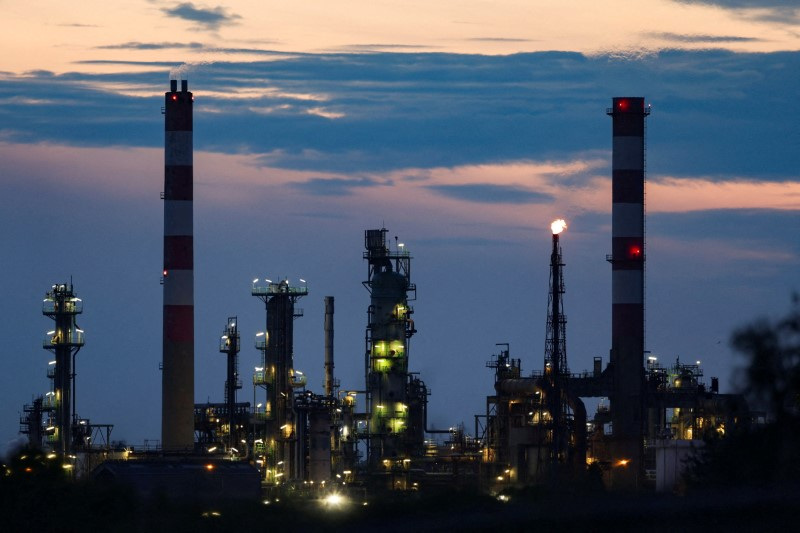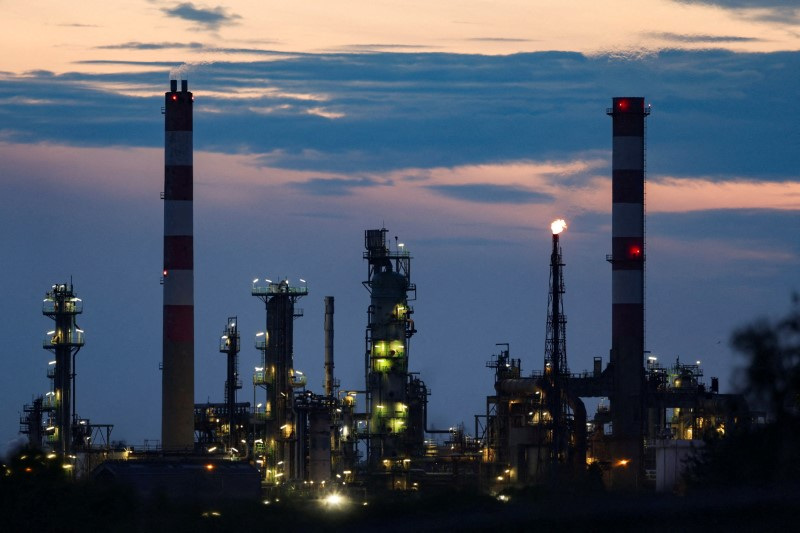Commodities
Oil edges higher on inventory drawdown outlook, Middle East risks

By Alex Lawler and Arunima Kumar
LONDON (Reuters) -Oil prices inched up on Wednesday nearing their highest level in almost two months, driven by forecasts for an eventual inventory drawdown during the third quarter peak summer demand season and geopolitical risks from the Middle East conflict.
The American Petroleum Institute (API) on Tuesday reported oil stocks rose by 914,000 barrels, market sources said. Still, analysts expect them to decline by nearly 3 million barrels in official inventory data due on Wednesday.
futures were up 45 cents, or 0.53%, to $85.46 a barrel by 1216 GMT. U.S. West Texas Intermediate crude futures gained 50 cents, or 0.62%, to $81.33.
However, a stronger dollar capped gains, as the market remained optimistic of a rate cut before the end of the year.
The dollar was up 0.3%, highlighting currency strength that makes dollar-priced oil more expensive for buyers holding other currencies.
“The ubiquitous view is that demand will increase during the summer,” said Tamas Varga of oil broker PVM. “Geopolitics is still seen as a supportive element of the equation.”
Official U.S. inventory data from the Energy Information Administration is out at 1430 GMT.
“It seems the market is shrugging off demand concerns for now, anticipating inventory drawdowns in peak third quarter demand season,” said Suvro Sarkar, energy sector team lead at DBS Bank.
Strength in front-month prices is also indicating strong physical demand for oil, a boon for prices in the near-term, analysts say. August Brent and WTI prices were around 80 cents a barrel higher than September prices.
“Key oil market indicators are signalling that crude’s rebound is reflecting a stronger underlying physical market,” JP Morgan analysts wrote in a client note.

On the geopolitical front, Houthi attacks on shipping in the Red Sea and mounting Israel-Hezbollah hostilities in Lebanon are also bullish for oil prices, DBS’ Sarkar said.
The Houthis have so far sunk two vessels and seized another, and said on Tuesday they used a missile to hit a vessel in the Arabian Sea.
Commodities
Oil prices rise; U.S. crude inventories plunge, Russia-Ukraine truce eyed
Commodities
India’s Reliance to stop buying Venezuelan oil over US tariffs, sources say
Commodities
Oil prices climb on Venezuela supply worries

 Forex3 years ago
Forex3 years agoForex Today: the dollar is gaining strength amid gloomy sentiment at the start of the Fed’s week

 Forex3 years ago
Forex3 years agoUnbiased review of Pocket Option broker

 Forex3 years ago
Forex3 years agoDollar to pound sterling exchange rate today: Pound plummeted to its lowest since 1985

 Forex3 years ago
Forex3 years agoHow is the Australian dollar doing today?

 Cryptocurrency3 years ago
Cryptocurrency3 years agoWhat happened in the crypto market – current events today

 World3 years ago
World3 years agoWhy are modern video games an art form?

 Commodities3 years ago
Commodities3 years agoCopper continues to fall in price on expectations of lower demand in China

 Economy3 years ago
Economy3 years agoCrude oil tankers double in price due to EU anti-Russian sanctions























